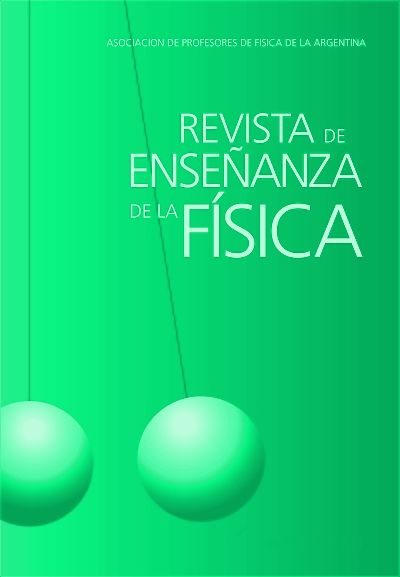The teaching of physics in secondary education: tensions between prescriptions and classrooms
DOI:
https://doi.org/10.55767/2451.6007.v35.n2.43683Keywords:
Curricular design, High school, Scientific alphabetization, Education for citizenshipAbstract
This article analyzes the tensions between the curricular prescriptions and the teaching of physics, specifically in Introduction to Physics for the 4th year of Buenos Aires Province. The study uses a qualitative methodology and is based on interviews with teachers and documentary analysis of the Curricular Design. The results reveal a gap between what is prescribed in the curriculum and its implementation in the classroom, and highlight the importance of promoting critical thinking in science and technology education. The interviewed teachers point out that the approach is mainly theoretical and that they adapt the contents according to the group, which faces difficulties such as the lack of time to cover all the contents, the lack of previous training of the students, the lack of resources to carry out practical experimental, and who find it difficult to relate the contents to everyday life. We close the article describing a series of proposals that attempt to transcend these tensions.
References
Acevedo Díaz, J., Vázquez Alonso, A. y Manassero Mas, M. (2003). Papel de la educación CTS en una alfabetización científica y tecnológica para todas las personas. Revista Electrónica de Enseñanza de las Ciencias, 2(2), 80-111.
Ander Egg, E. (1996). La Planificación Educativa: Conceptos, métodos, estrategias y técnicas para educadores. Magisterio del Río de la Plata, Argentina.
Auler, D. (2007). Articulação Entre Pressupostos do Educador Paulo Freire e do Movimento CTS: Novos Caminhos Para a Educação em Ciências. Contexto & Educação, 22(1), 167-188.
Bolívar Botía, A. (1992). Papel del profesor en los procesos de desarrollo curricular. Revista Española de Pedagogía, 50(191), 131-151.
Da Silva, T. T. (1997). Descolonizar el currículo: estrategias para una pedagogía crítica (Dos o tres comentarios sobre el texto de Michael Apple). En P., Gentili (Comp.), Cultura, política y currículo (63-78). Buenos Aires, Argentina: Losada.
De Alba, A. (1998). Currículum. Crisis, mitos y perspectivas. Buenos Aires, Argentina: Miño y Dávila.
Delizoicov, D., Angotti, J. A., e Pernambuco, M. M. C. A. (2011). Ensino de ciências: fundamentos e métodos. 4. ed. São Paulo, Brasil: Cortez.
Dirección General de Cultura y Educación (2010). Diseño Curricular para la Educación Secundaria Ciclo Superior. ES4: Introducción a la Física. La Plata, Argentina: DGCyE.
Giroux, H. & McLaren, P. (1986) Teacher education and the politics of engagement: the case for democratic schooling. Harvard Educational Review, 56(3), 213-238.
Goetz, J. P. y Lecompte, M. D. (1988). Etnografía y diseño cualitativo en investigación educativa. Madrid, España: Mo-rata.
Marco-Stiefel, B. (2004). Alfabetización científica: un puente entre la ciencia escolar y las fronteras científicas. Cultu-ra y Educación, 16(3), 273-287.
Massarini, A. y Schnek, A. (2015). Ciencia entre todxs: tecnociencia en contexto social. Una propuesta de enseñanza. 1° ed. Buenos Aires, Argentina: Paidós.
Mometti, C., Tajmel, T. y Pietrocola, M. (2021). Physics education from the perspective of epistemic colonization: a decolonial lens from the Brazilian curriculum. Revista de enseñanza de la física, 33(2), 343-350.
Moreira, M. A. y Greca, I. M. (2003). Cambio conceptual: análisis crítico y propuestas a la luz de la teoría del aprendi-zaje significativo. Ciência & Educação, 9(2), 301-315.
Moreno Olivos, T. (2016). El currículum de la educación secundaria argentina. Revista mexicana de investigación edu-cativa, 22(73), 613-636.
Mordeglia, C., Cordero, S. y Dumrauf, A. G. (2006). Experimentando en Ciencias Naturales de EGB3 ¿Qué nos ofrecen los libros de texto? Memorias del 8..o Simposio de Investigadores en Enseñanza de la Física, 220-228.
Mordeglia, C. y Mengascini, A. S. (2014). Caracterización de prácticas experimentales en la escuela a partir del discur-so de docentes de primaria y secundaria. Enseñanza de las Ciencias, 32(2), 71-89.
Pacheco, L. C. e Muenchen, C. (2022). A construção do currículo de Física na perspectiva Freire-CTS em um contexto de pré-vestibular municipal. Revista de enseñanza de la física, 34(1), 101-110.
São Paulo.(2020). Currículo Paulista do Ensino Médio. Disponible en: https://efape.educacao.sp.gov.br/curriculopaulista/
Shulman, L. (2005). Conocimiento y enseñanza: fundamentos de una nueva reforma. Revista de Curriculum y Forma-ción del profesorado, 9(2), 1-30.
Strike, K. A. & Posner, G. J. (1992) A revisionist theory of conceptual change. En Duschl, R. y Hamilton, R. (Eds.), Phi-losophy of science, cognitive psychology, and educational theory and practice (147-176). Albany: Suny Press.
Wagner Boián, P. F. y Norah Giacosa, R. (2015). Análisis del Diseño Curricular del área Física en la Educación Secunda-ria de Misiones. Revista de Enseñanza de la Física, 27(Extra), 27-35.
Downloads
Published
Issue
Section
License

This work is licensed under a Creative Commons Attribution-NonCommercial-NoDerivatives 4.0 International License.
Aquellos autores/as que tengan publicaciones con esta revista, aceptan los términos siguientes:Los autores/as conservarán sus derechos de copiar y redistribuir el material, bajo los términos estipulados en la Licencia de reconocimiento, no comercial, sin obras derivadas de Creative Commons que permite a terceros compartir la obra bajo las siguientes condiciones:
- Reconocimiento — Debe reconocer adecuadamente la autoría, proporcionar un enlace a la licencia e indicar si se han realizado cambios. Puede hacerlo de cualquier manera razonable, pero no de una manera que sugiera que tiene el apoyo del licenciador o lo recibe por el uso que hace.
- NoComercial — No puede utilizar el material para una finalidad comercial.
- SinObraDerivada — Si remezcla, transforma o crea a partir del material, no puede difundir el material modificado.
- Los autores/as podrán adoptar otros acuerdos de licencia no exclusiva de distribución de la versión de la obra publicada (p. ej.: depositarla en un archivo telemático institucional o publicarla en un volumen monográfico) siempre que se indique la publicación inicial en esta revista.
- Se permite y recomienda a los autores/as difundir su obra a través de Internet (p. ej.: en archivos telemáticos institucionales o en su página web) antes y durante el proceso de envío, lo cual puede producir intercambios interesantes y aumentar las citas de la obra publicada. (Véase El efecto del acceso abierto).










